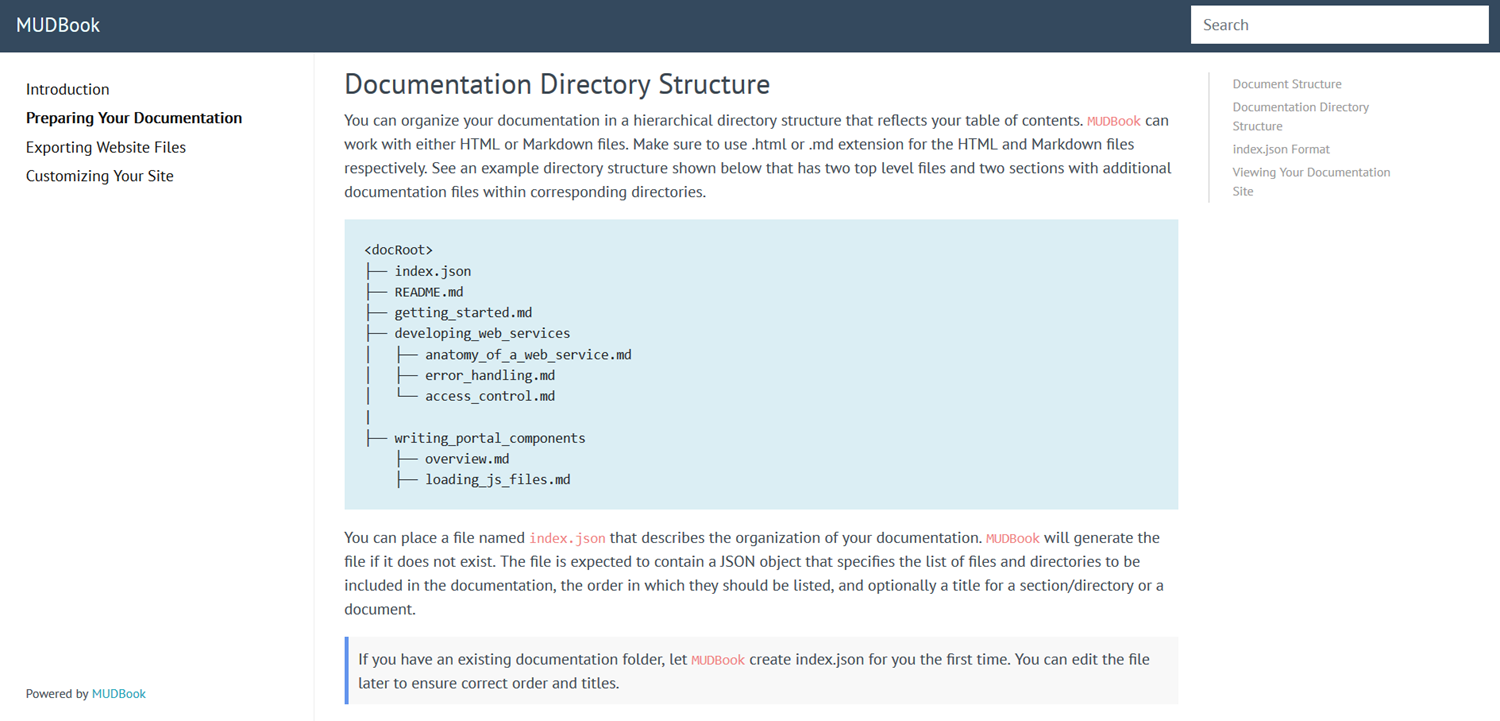mudbook
v1.0.4
Published
Generate documentation Web sites from HTML and Markdown pages.
Downloads
12
Maintainers
Readme
MUDBook
MUDBook takes a collection of Markup (HTML) and Markdown pages and turns them into a Web site that nicely displays your documentation similar to GitBook. You can use MUDBook either as a tool to create a static Website from your documentation or as a Web server to serve the pages. Key features include:
- Support for .md and .html files
- Search using lunr.js
- Search and Syntax highlighting using highlights.js
- Responsive, looks great on desktops as well as mobile
- Fully customizable using your own document template

Install
Install mudbook globally using npm -g option.
npm install mudbook -gQuick Start
Simplest way of seeing MUDBook in action is to run the mudbook command. This will start MUDBook server on port 3000. You can open a Web browser and type http://localhost:3000 in the address bar to view MUDBook documentation.
Usage
> mudbook -h
usage: mudbook [[-h | --help | start | export] [options]]
Calling mudbook without any option will start the server and show MUDBook documentation.
-h | --help - Show this help message
init - Copy files to your doc directory to enable customization
start - Start mudbook server and serve site content
export - Generate static HTML content for your site
init options:
-d --docRoot <doc-root-dir> Path to documentation root directory
-w --overwrite Replace existing files in output directory
start options:
-p --port <port-number> Port to use [3000]
-s --httpsPort HTTPS port
-c --cert <cert-file-path> Path to ssl cert file (default: cert.pem)
-k --key <key-file-path> Path to ssl key file (default: key.pem)
-d --docRoot <doc-root-dir> Path to documentation root directory
export options:
-d --docRoot <doc-root-dir> Path to documentation root directory
-o --outputDir <output-dir> Output directory for generated Web site files
-w --overwrite Replace existing files in output directory